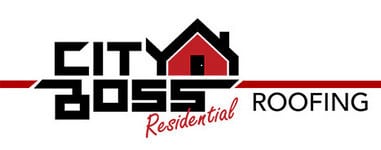Discovering a leaking roof can be one of the most frustrating things for a homeowner. There are several reasons your roof may be leaking, but you could also be dealing with a moisture or humidity issue depending on your home and the climate you live in.
Here are a few clues to look for to determine if your roof is leaking:
- Wet Spots
- Peeling Paint or Wallpaper
- Sagging Ceilings
- Mold
- Water Stains
- Accumulating Water
- Damp Odors
Water will typically get into your home through damaged or missing shingles, vents, skylights, near the roofing planes, or any place where the roof flashing is poorly secured or missing completely.
Roof Leak or Condensation?
One of the easiest ways to tell the difference between a roof leak and condensation is the size and position of the stain on you ceiling.
When you are dealing with condensation, you may see several small stains on your ceiling rather than just one large stain. Typically, these stains with condensation are close to the exterior walls of your house and can develop without heavy rains or storms.
 The color of the stain associated with condensation is typically dark with a white center. If this is the case, you will most likely also deal with mold, which is a good indication of a condensation issue.
The color of the stain associated with condensation is typically dark with a white center. If this is the case, you will most likely also deal with mold, which is a good indication of a condensation issue.
With a roof leak the stain could be located anywhere on the ceiling, including but not limited to the exterior walls of your home. With a leaking roof, the coloring of the stain is the opposite. In this case, the stain will be darkest in the center and gets lighter at the edges.
The darker the stain, the better the indication of how old the stain is and how long your roof could have been leaking. If you see dark stains on your ceiling, don’t delay and reach out for professional help. The longer you wait to have the problem addressed, the more serious the problem could become.
What causes my ceiling to sag?
If the leak in your roof is severe and allowing rainwater into your home, the build up of water on the ceiling materials can cause the ceiling to sag. The ceilings in your home are made from a material that may break down when wet. When the water has gone through the outer layer of the roof, it accumulates and causes the materials to break down and sag. If this happens, it is very important for the source of the water to be found and the water drained. Only then can the leak can be properly repaired.
How to deal with mold
Mold is normally quite clear indication of a roof leak or condensation. During a roof inspection, a professional will inspect the chimney and vents first because that is typically where the mold will start forming. One of the most common underlying causes of mold is a leak in the flashing of a metal roof.
 Once the inspector has determined that you have a roof leak, they will be able to trace the evidence you are seeing to the location of the leak on your roof. If you have traditional shingles, fixing the problem is an easy process. In most cases, the leak is coming from damaged shingles and tiles. In a case like this, you will simply need to replace the tiles or shingles and seal the edges with roofing cement.
Once the inspector has determined that you have a roof leak, they will be able to trace the evidence you are seeing to the location of the leak on your roof. If you have traditional shingles, fixing the problem is an easy process. In most cases, the leak is coming from damaged shingles and tiles. In a case like this, you will simply need to replace the tiles or shingles and seal the edges with roofing cement.
Mold can be a serious matter, causing many potential health problems. If you suspect any mold issues, take immediate action and call in a roofing expert to address and fix the problem.
There are many different causes for roof leaks, but most can be handled quickly if a professional oversees the job.
For more information on problems with your roofing system, contact us today!





